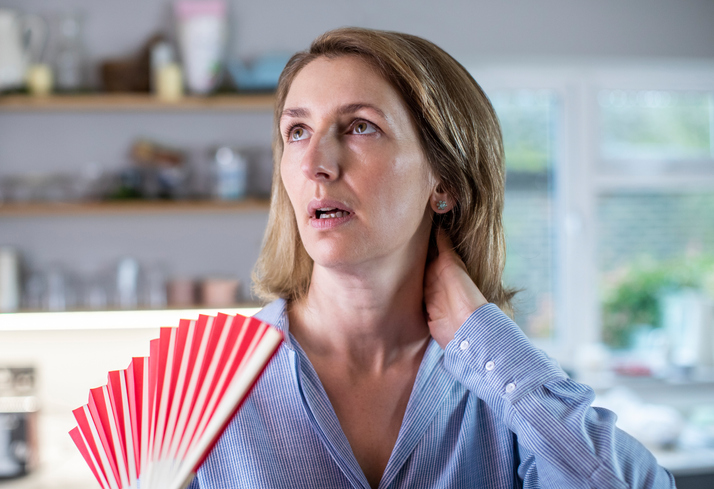What Do You Really Know About Hot Flushes?
If you are experiencing them, then you know all about them, or do you?

We all think we know what hot flushes are, but there are a few misconceptions about them that may be news to you.
Here are just a few of the common misunderstandings.
Hot flushes affect all menopausal women
Fortunately perhaps, this is just not true, but it may seem as if you and every menopausal women you know are having them!
It seems that around a quarter of women simply don’t get them and it is often related to diet as it’s believed that those who follow a vegan/vegetarian diet experience less.
One reason may be the increased amount of phytoestrogens from both plant food and soy, and another that they are not subject to the antibiotics/growth promotors found in mass produced meat.
But don’t think that because you are not flushing, but are getting other menopausal symptoms, that you are not actually in the menopause.
Around half of all menopausal women don’t get hot flushes but do experience other symptoms during perimenopause.
They feel the same for every woman
Like everything else associated with your hormones, response to symptoms can be very different and individual.
So a hot flush is just a hot flush? No, there are many different types: short ones, very minor ones, just a mild feeling of heat, or hot flushes that can be very intense.
So they can last maybe a minute or a couple of minutes and for many unfortunate women they are experienced regularly throughout the day and night.
You may notice it in your face as it gets red, but it can be experienced throughout the whole body as either heat or hot or cold sweats.
No two women will experience them the same way and personally I never got a red face, but a veritable waterfall of cold sweat running down my body instead. Still not sure I would not have preferred a flushed face to years in very loose fitting natural fibre clothes!
Some women do get a warning sign that a flush is going to start as some report a tingling sensation in their hands.
If you do get a warning, then applying progesterone cream directly to the thin skin at the wrist can often be enough to control it.
Hot flushes last for years
Again how long flushes last is very individual but it certainly is not true that they go on for ever in all women.
Most women experience peri/menopausal symptoms for around 3-5 years, if they experience them at all. They may only occur for a year, but other factors influence how long you have flushes, not just your hormones.
For instance oestrogen dominance plays a part as does raised stress and anxiety levels – all these are factors that can be helped.
It’s all down to your hormones
Yes that’s true, but menopause is not the only time women experience flushes.
Pregnancy is often the first time women experience these but at any time in life they can occur related to external factors. This may be illness, medication or a stressed nervous system and depleted adrenal glands as all can be contributory factors.
Women undergoing chemotherapy will often experience flushing and if you are under long-term stress that will make a difference.
I am also hearing from an increasing number of women who are experiencing menopause symptoms well post menopause.
A recent study has shown that a much higher proportion of ‘older’ women (average age 59 in this study) than was expected still suffer from hot flushes and night sweats, well after menopause is assumed to be over.
Post-menopause if oestrogen dominance is still present from being overweight, or exposed to other forms of oestrogen through the diet or environmentally, then that can increase flushes.
Also other factors can be at work, particularly stress or anxiety as these definitely affect your overall hormone balance – and not in a good way.
Helpful information
The majority of women find flushes dealt with sufficiently by supplementing bioidentical progesterone with Serenity which is progesterone only.
However, if your flushes and night sweats are severe then you will need a little extra help. So it may be more effective to combine progesterone with some oestrogen in the 20 to 1 cream as a better solution for you.
if your sleep is being disturbed and night sweats are proving a problem, then the following article will help.
https://anna.blog.wellsprings-health.com/night-sweats-and-what-to-do-about-them/


















